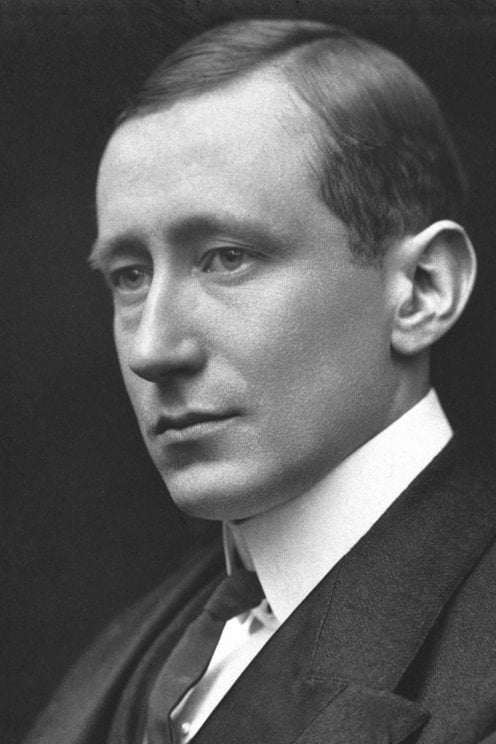 Nikola Tesla was a scientist whose inventions include the Tesla coil, alternating-current (AC) electricity, and the discovery of the rotating magnetic field.
Nikola Tesla was a scientist whose inventions include the Tesla coil, alternating-current (AC) electricity, and the discovery of the rotating magnetic field.
 Thomas Alva Edison (February 11, 1847 – October 18, 1931) was an American inventor and businessman who has been described as America’s greatest inventor.[1][2][3] He developed many devices in fields such as electric power generation, mass communication, sound recording, and motion pictures.[4] These inventions, which include the phonograph, the motion picture camera, and the long-lasting, practical electric light bulb, have had a widespread impact on the modern industrialized world.[5] He was one of the first inventors to apply the principles of organized science and teamwork to the process of invention, working with many researchers and employees. He established the first industrial research laboratory.[6]
Thomas Alva Edison (February 11, 1847 – October 18, 1931) was an American inventor and businessman who has been described as America’s greatest inventor.[1][2][3] He developed many devices in fields such as electric power generation, mass communication, sound recording, and motion pictures.[4] These inventions, which include the phonograph, the motion picture camera, and the long-lasting, practical electric light bulb, have had a widespread impact on the modern industrialized world.[5] He was one of the first inventors to apply the principles of organized science and teamwork to the process of invention, working with many researchers and employees. He established the first industrial research laboratory.[6]
 Eadweard Muybridge (/ˌɛdwərd ˈmaɪbrɪdʒ/; 9 April 1830 – 8 May 1904, born Edward James Muggeridge) was an English-American photographer important for his pioneering work in photographic studies of motion, and early work in motion-picture projection. He adopted the first name Eadweard as the original Anglo-Saxon form of Edward, and the surname Muybridge, believing it to be similarly archaic.[1]
Eadweard Muybridge (/ˌɛdwərd ˈmaɪbrɪdʒ/; 9 April 1830 – 8 May 1904, born Edward James Muggeridge) was an English-American photographer important for his pioneering work in photographic studies of motion, and early work in motion-picture projection. He adopted the first name Eadweard as the original Anglo-Saxon form of Edward, and the surname Muybridge, believing it to be similarly archaic.[1]
Born in England, at age 20 he emigrated to America as a bookseller, first to New York, and then to San Francisco. Planning a return trip to Europe in 1860, he suffered serious head injuries in a stagecoach crash in Texas.[2] He spent the next few years recuperating in England, where he took up professional photography, learning the wet-plate collodion process, and secured at least two British patents for his inventions.[2] He went back to San Francisco in 1867. In 1868 he exhibited large photographs of Yosemite Valley, which made him world-famous.
 Guglielmo Marconi, 1st Marquis of Marconi (Italian: [ɡuʎˈʎɛlmo marˈkoːni]; 25 April 1874 – 20 July 1937) was an Italian[1][2][3][4] inventor, and electrical engineer, known for his pioneering work on long-distance radio transmission,[5] development of Marconi’s law, and a radio telegraph system. He is credited as the inventor of radio,[6] and he shared the 1909 Nobel Prize in Physics with Karl Ferdinand Braun “in recognition of their contributions to the development of wireless telegraphy”.[7][8][9]
Guglielmo Marconi, 1st Marquis of Marconi (Italian: [ɡuʎˈʎɛlmo marˈkoːni]; 25 April 1874 – 20 July 1937) was an Italian[1][2][3][4] inventor, and electrical engineer, known for his pioneering work on long-distance radio transmission,[5] development of Marconi’s law, and a radio telegraph system. He is credited as the inventor of radio,[6] and he shared the 1909 Nobel Prize in Physics with Karl Ferdinand Braun “in recognition of their contributions to the development of wireless telegraphy”.[7][8][9]
Marconi was also an entrepreneur, businessman, and founder of The Wireless Telegraph & Signal Company in the United Kingdom in 1897 (which became the Marconi Company). He succeeded in making an engineering and commercial success of radio by innovating and building on the work of previous experimenters and physicists.[10][11] In 1929, Marconi was ennobled as a Marchese (marquis) by King Victor Emmanuel III of Italy, and, in 1931, he set up the Vatican Radio for Pope Pius XI.
Philo Farnsworth, in full Philo Taylor Farnsworth II, (born August 19, 1906, Beaver, Utah, U.S.—died March 11, 1971, Salt Lake City, Utah), American inventor who developed the first all-electronic television system.
Farnsworth was a technical prodigy from an early age. An avid reader of science magazines as a teenager, he became interested in the problem of television and was convinced that mechanical systems that used, for example, a spinning disc would be too slow to scan and assemble images many times a second. Only an electronic system could scan and assemble an image fast enough, and by 1922 he had worked out the basic outlines of electronic television.
In 1923, while still in high school, Farnsworth also entered Brigham Young University in Provo, Utah, as a special student. However, his father’s death in January 1924 meant that he had to leave Brigham Young and work to support his family while finishing high school.
 David Sarnoff (February 27, 1891 – December 12, 1971) was an American businessman and pioneer of American radio and television. Throughout most of his career he led the Radio Corporation of America (RCA) in various capacities from shortly after its founding in 1919 until his retirement in 1970.
David Sarnoff (February 27, 1891 – December 12, 1971) was an American businessman and pioneer of American radio and television. Throughout most of his career he led the Radio Corporation of America (RCA) in various capacities from shortly after its founding in 1919 until his retirement in 1970.
He ruled over an ever-growing telecommunications and media empire that included both RCA and NBC, and became one of the largest companies in the world. Named a Reserve Brigadier General of the Signal Corps in 1945, Sarnoff thereafter was widely known as “The General.”[4] Sarnoff is credited with Sarnoff’s law, which states that the value of a broadcast network is proportional to the number of viewers.[5]
]]>